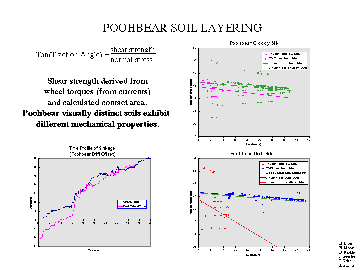Preliminary Results and Comparison with SNC meteorites and the Earth.
 |
This chart shows graphical representations of some soil structures determined by the Sojourner rover soil mechanics experiment. |

The missions are managed by the Jet Propulsion Laboratory, Pasadena, CA, for NASA's Office of Space Science, Washington, DC.